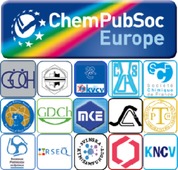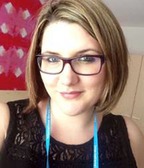Gone are the days when every mention of open access (OA) came with a long explanation of what it entails. Instead, OA is now widely accepted as a model for scholarly publishing. ChemistryOpen is proud to have been one of the journals there at the start for the chemistry community, being the first society‐owned fully OA general chemistry journal, launched in 2011. Since then, ChemistryOpen has gone from strength to strength, and was rewarded with an impressive 2015 impact factor of 3.585. Following this, we have recently seen an increase in both the quantity and quality of submissions, enabling us to achieve our aim of publishing high‐quality chemistry to the widest possible audience.
A lot has happened in terms of OA over the years, and it is great to see so many funding bodies and institutions advocating OA publishing. One of the most notable driving forces towards OA is the Horizon 2020 programme, in which the European Commission mandates all beneficiaries to publish their work OA, and this notion is being echoed by other institutes and funding bodies the world over. This positive outlook on OA has, however, led to some negatives in the OA landscape. One of the detrimental ways in which some publishers operate is to deliberately adopt journal names that sound almost identical to others. Dr. Peter Gölitz touches on this fact in his latest Editorial for Angewandte Chemie; however, this is a particular challenge for the authors and readers of ChemistryOpen. Although there are many examples, two particular journals with identical scope to ChemistryOpen that have adopted very similar names are Open Chemistry published by De Gruyter with an impact factor of 1.207 (formerly known as the Central European Journal of Chemistry) and Open Chemistry Journal published by Bentham Open. While the journal name and scope may be almost identical, it is important to know that these are not, in fact, one and the same.
ChemistryOpen is delighted to have been the very first society‐owned, fully open access, general chemistry journal, and we are co‐owned and supported by ChemPubSoc Europe, which is made up of 16 national chemical societies that together serve approximately 70 000 society members.

To complement the support that we receive from ChemPubSoc Europe, we offer all members of the national societies a 20% discount on the article publication charge (APC). In addition, our partnership will also result in royalties that are paid to ChemPubSoc Europe annually. This sets us apart from the competition. Neither Open Chemistry nor Open Chemistry Journal have such partnerships and they do not support a society through the payment of royalties. ChemistryOpen is also proud to adhere to balanced and high‐quality peer review that enables us to publish such great articles, which is reflected by our success.
Perhaps more harmful to OA publishing, on the whole, is the growing number of predatory publishers. This exploitive business model is threatening the progress that has been made over the years with respect to OA publishing and open science. Predatory publishers offer little or no peer review, meaning that there is zero quality control and they often publish plagiarized or fabricated results. They do, however, continue to endorse APCs and pose as reputable publishers, often by advertising fictional editorial boards and false location details. Perhaps the most frustrating feature of predatory publishers is the way in which they aggressively campaign to potential authors, spamming inboxes all around the globe.
There are, however, a number of useful websites that are being maintained to advise authors about OA publishing options. One of which is “Beall's List”, which was initially launched in 2010 to warn academics of predatory publishers. The list is maintained by University of Colorado Denver librarian Jeffrey Beall, and seeks to identify all publishers that fit into certain criteria. Most notable, however, is the Directory of Open Access Journals (DOAJ), which was launched way back in 2003 at Lund University, Sweden, and remains committed to high‐quality, peer‐reviewed OA publishing. These resources offer information and advice about OA publishing, and the Editorial Team at ChemistryOpen always recommend that authors and readers take a little precaution, be it prior to submitting an article or when browsing the literature.
Change is in the Air
The past year has seen many changes at ChemistryOpen; most notably, we have implemented a new flat‐rate APC. Our standard fees of 2500€ for Full Papers and Communications or 3500€ for Reviews and Minireviews have been heavily reduced to only 1800€ for all article types! This reduced fee will be in effect at least until August 31st, 2018. Therefore, all submissions received by the Editorial Office on or before this date will be eligible for the reduced rate. In addition, all members of a ChemPubSoc Europe national society will be entitled to a further 20% discount, making the APC only 1440€!
For further information about other discounts and waivers, details can be found on the journal's homepage at www.ChemistryOpen.org/charges.
ChemistryOpen begins 2017 with further changes, and this time it is to our Editorial Advisory Board (EAB). While we are pleased that many of our EAB members will remain for a second term, we are also excited to welcome some fresh faces. The Editorial Team at ChemistryOpen would like to take this opportunity to say a big thank you to the retiring EAB members for all of their help and support over the last few years.
We are pleased to announce our refreshed EAB (Table 1), with members from all over the world that offer expertise across all chemistry‐related fields, and together we hope to continue our success in publishing high‐quality papers.
Table 1.
Members of the Editorial Advisory Board for ChemistryOpen.
| Chairmen | ||||
|---|---|---|---|---|
| Ramón Martinez‐Máñez | Universitat Polytechnica de Valencia | Co‐Chairman | ||
| Thomas Wirth | Cardiff University | Co‐Chairman | ||
| Jean‐Marie Lehn | Collège de France/Université de Strasbourg | Honorary Chairman | ||
| Members | ||||
|---|---|---|---|---|
| Fernando Albericio | University of KwaZulu‐Natal | Thisbe Lindhorst | Universität Kiel | |
| Valentin Ananikov | Zelinsky Institute of Organic Chemistry | Carlos Lodeiro | Universidade Nova de Lisboa | |
| Didier Astruc | Institut des Sciences Moléculaires | Todd L. Lowary | University of Alberta | |
| Jochen Autschbach | State University of New York at Buffalo | Stefan Matile | Université de Genève | |
| Christian Becker | Universität Wien | Mikko Metsä‐Ketelä | University of Turku | |
| Per Berglund | KTH Royal Institute of Technology | Pedro Molina | Universidad de Murcia | |
| Sheshanath V. Bhosale | RMIT University | Toshiaki Murai | Gifu University | |
| F. Matthias Bickelhaupt | Vrije Universiteit Amsterdam | Berit Olofsson | Stockholms Universitet | |
| Renata Bilewicz | University of Warsaw | Mario Pagliaro | Istituto per lo Studio dei Materiali Nanostrutturati, CNR | |
| Kathrin Breuker | Universität Innsbruck | Yuanjiang Pan | Zhejiang University | |
| David Bryce | University of Ottawa | Oliver Reiser | Universität Regensburg | |
| Jianfeng Cai | University of South Florida | Knut Rurack | Bundesanstalt für Materialforschung und ‐prüfung | |
| Juan Cámpora | CSIC‐Universidad de Sevilla | James Rusling | University of Connecticut | |
| Minserk Cheong | Kyung Hee University | Albert Schenning | Technische Universiteit Eindhoven | |
| Young Keun Chung | Seoul National University | Patrik Schmuki | Friedrich‐Alexander‐Universität Erlangen‐Nürnberg | |
| Richard G Compton | University of Oxford | Min Shi | Shanghai Institute of Organic Chemistry | |
| Alberto Credi | Universiry of Bologna | Norio Shibata | Nagoya Institute of Technology | |
| Patrick Dansette | Université Paris‐Descartes | Rint Sijbesma | Technische Universiteit Eindhoven | |
| Matthias D′hooghe | Ghent University | Holger Stephan | Helmholtz‐Zentrum Dresden‐Rossendorf | |
| Ulf Diederichsen | Universität Göttingen | Brian Stoltz | California Institute of Technology | |
| Benjamin Dietzek | Friedrich Schiller University Jena | Reshef Tenne | Weizmann Institute of Science | |
| Antony Fairbanks | University of Canterbury | Matthew Todd | University of Sydney | |
| Elena Ferapontova | Aarhus University | Jaume Veciana | Institut Ciencia Materials Barcelona | |
| Stefan Grimme | Universität Bonn | Hans‐Achim Wagenknecht | Karlsruher Institut für Technologie | |
| Narayan Hosmane | Northern Illinois University, DeKalb | Ralph Weissleder | Massachusetts General Hospital | |
| Christoff Janiak | Universität Düsseldorf | Charlotte Willans | University of Leeds | |
| Klaus Jurkschat | Technische Universität Dortmund | Gunther Wittstock | Universität Oldenburg | |
| Mats Larhed | Uppsala Universitet | Johan Wouters | Université de Namur | |
| Ying‐Wu Lin | University of South China | Vivian W. W. Yam | The University of Hong Kong | |
As a multidisciplinary journal, ChemistryOpen covers all aspects of chemistry and its subdisciplines. The journal also features specialized Virtual Issues that seek to highlight particular areas within the chemical sciences of current interest and importance. In 2016, ChemistryOpen launched its latest Virtual Issue, focusing on Advances in Electrochemistry. This Virtual Issue is being prepared in collaboration with Guest Editor, Professor Bernhard Gollas (TU Graz, Austria), and it is still open to new submissions; researchers wishing to contribute to this or future Virtual Issues should contact the Editorial Office via e‐mail for further details.
On behalf of the entire ChemistryOpen Editorial Team, we thank all of our board members (past and present), reviewers, authors, and readers for their continued support. We very much look forward to being part of the continuing evolution of OA publishing.

Dr. Kate Lawrence
Deputy Editor
ChemistryOpen
K. Lawrence, ChemistryOpen 2017, 6, 3.
Footnotes
On January 15, 2017, the contents of Beall's list were removed from the web and deemed “unpublished”. No official reason for this drastic development has been given. We are still waiting to see if the list will be reinstated, but the appearance of other similar resources is sure to be on the horizon.


